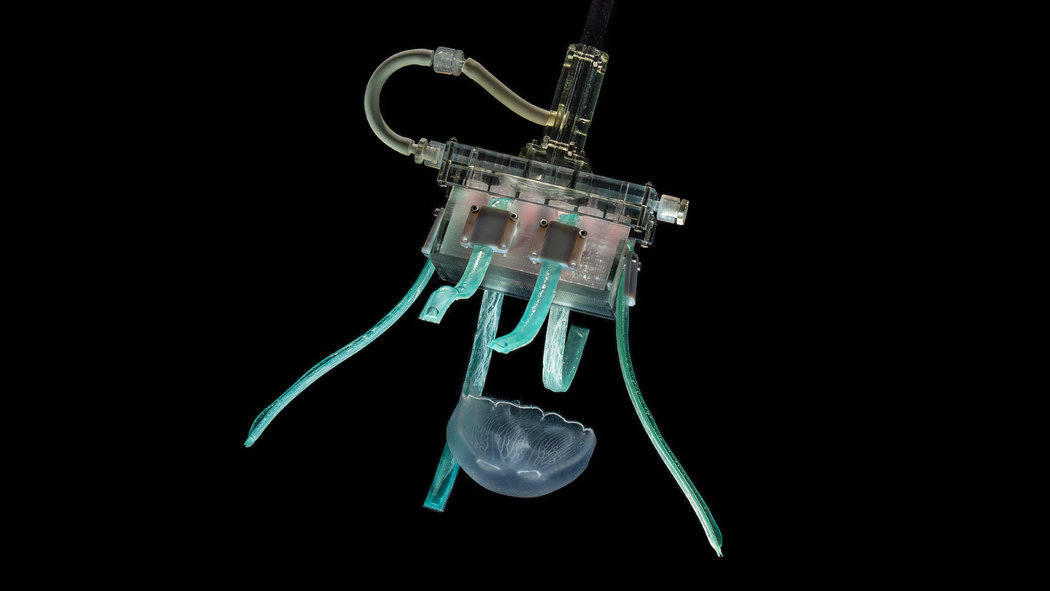robots modelled on jellyfish
Robotic jellyfish could help service offshore wind farms A fleet of robotic jellyfish has been designed to monitor sensitive ecosystems, including coral reefs.
The underwater drones were invented by engineers at Florida Atlantic University and are powered by rings of hydraulic tentacles.The robots can pass through narrow holes without causing damage.
The flexible, 20cm-wide robots are inspired by the appearance of the moon jellyfish during its larval stage.The design is intended to be less environmentally damaging than a drone submarine, according to Professor Erik Engeberg of Florida Atlantic University.

"Mini-submarines are rigid and typically use a propeller for locomotion," he said. "Propellers can cut through the reef and the hard shell of a submarine can cause damage to delicate ecosystems if there is a collision."The soft jellyfish robot can avoid these problems with its unorthodox design and biologically inspired locomotion strategy."
To move, the robots use eight silicone rubber tentacles powered by pumps. Water flows into the tentacles, filling them and then, when the pumps are turned off, flows back into the surrounding sea. This propels the robot jellyfish forward and produces a realistic flapping motion.
A team at the University of Texas at Dallas, for example, tested a hydrogen-powered robot, while engineers at Virginia Tech have experimented with a mechanical jellyfish measuring 1.7 metres.
The way fish swim, based on the flapping of their different fins, has become the main source of inspiration for those experimenting with new underwater vehicles. By copying these organisms when building underwater robots, we can design new underwater vehicles capable of combining high manoeuvrability with unrivalled efficiency.
Leave a comment